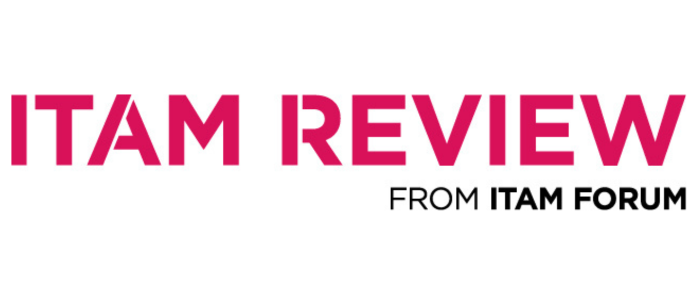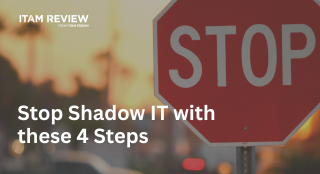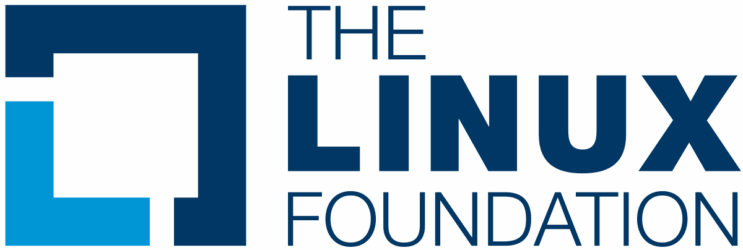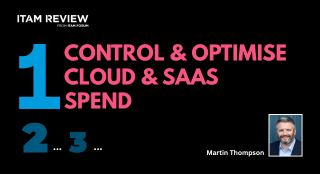Our Analysis: Gartner Magic Quadrant SAM Managed Services
(This article is by Ryan Stefani, Chief Product Officer, LISA.)
Executive Summary
Gartner has released the 5th edition of its SAM Managed Services Magic Quadrant. This edition highlights nine key capabilities delivered consistently across major markets by dedicated resources, spanning a wide range of publishers. Notably, this edition places increased emphasis on the convergence of FinOps and SaaS, as well as the evolving role of ESG (Environmental, Social, and Governance) in SAM.
Providers assessed in this report indicate that, in 2023, they delivered an ROI of more than 200%. For more than half of their clients, savings exceeded the costs of the managed service by a factor of at least two, underscoring the potential value SAM brings to organisations.
Gartner Market Definition
Gartner defines a SAM Managed Service provider as “as services expert providers deliver to manage the software, SaaS and cloud assets of end-user organizations. They include skills, processes, technologies and governance to transform and run the SAM discipline on behalf of the client.”
Key Takeaways
- Smaller niche vendors, though excluded from the Magic Quadrant, remain viable for specific needs or projects where appropriate.
- Providers in this Magic Quadrant reported delivering an ROI of more than 200% in 2023, proving those proper investments in asset management yield substantial returns.
- The scope of SAM continues to grow, now incorporating the convergence of FinOps and ESG. While this expansion is beneficial, it should further evolve to encompass a more holistic approach to managing all technology.
Representative Vendors
Note: These vendors are listed in alphabetical order within these categories and do not represent the MQ graphic provided by Gartner.
| New Vendors: Accenture EY | Vendors Removed: Bytes: Removed for a lack of distribution of revenue across regions and number of SAM resources dedicated to SAM. DXC Technology: Removed for lack of convergence of FinOps and cloud license management, and ESG services. |
| Challengers: Deloitte KPMG | Leaders: Anglepoint Crayon Livingstone Group Software |
| Niche Players: Accenture EY Insights Insight ITAM Solutions Noventiq SHI | Visionaries: None |
It’s important to note that a Magic Quadrant doesn’t exclusively represent the vendors’ product strengths. That is just a small fraction. It’s important for users to understand what the Magic Quadrant represents, and it’s equally important that users read and analyse the companion document, critical capabilities. This is where the analysts evaluate the products capabilities and utilise specific use cases for deeper analysis.
Our Analysis
Focus Areas
Inclusion and Exclusion Criteria: Determining who should and shouldn’t be part of a Magic Quadrant is a challenging task, but it’s crucial to understand the process. For this edition, Gartner identified nine essential criteria for inclusion (of which eight must be met) and seven additional elements (of which six must be met). While we won’t cover all of them, we’ll highlight some key elements worth noting.
Continuous Delivery: Gartner consistently emphasizes the importance of continuous service delivery in the SAM MSP Magic Quadrant. As a result, providers focusing solely on one-time renewal support, tool implementations, or audit defense are excluded. While these services have value, they do not align with the ongoing nature of SAM services.
FinOps and Cloud License Management: FinOps and Cloud License Management (including BYOL Management) are now essential requirements for inclusion, underscoring the growing importance of upskilling in FinOps. In fact, Gartner reported that “83% of SAM managed services delivered by the assessed providers incorporate FinOps services.” This also includes managing and optimizing resources in AWS, Azure, and GCP environments. If you’re not incorporating FinOps into your SAM strategy, you’re making a significant oversight.
Breadth: Breadth: Gartner requires coverage of at least 20 publishers, with Adobe, IBM, Microsoft, Salesforce, SAP, ServiceNow, Oracle, and Workday being mandatory. This breadth likely excludes many smaller service providers in the SAM and FinOps market, which we will discuss further later.
Dedicated Resources and Sub-Contractors: Providers must have at least 50 dedicated SAM delivery staff, with over 50% of services not delivered by subcontractors. This detail is often overlooked by end users, as many providers use independent specialty subcontractors to deliver services, especially in highly specialized scenarios. We’ll explore this further later, but it’s crucial not to discount smaller vendors in your search for services, as they may be the ones actually delivering services for larger SAM MSPs.
ROI and Market Growth
This may be the most critical takeaway from the entire report, even though it could easily be overlooked. Every organization struggles to demonstrate the value of investments in ITAM and SAM. However, the data is compelling: “Providers assessed in this Magic Quadrant report that, in 2023, they delivered an ROI of more than 200%.” For more than half of their clients, savings exceeded the costs of the managed service by a factor of two. Even more telling, the SAM managed service providers did not track ROI for only 12% of their clients, and they achieved at least break-even ROI (101% or higher) for over 80% of their clients. This clearly demonstrates that with skilled resources and proper investment, ITAM/SAM is a substantial value add for organizations.
Moreover, the market itself is growing steadily. The compound annual growth rate (CAGR) has been 15% over the past two years, with the total market size for scheduled and continuous SAM managed services exceeding $530 million in 2023, including project services. This indicates healthy and consistent growth in the market.
Doesn’t Represent All of The Vendors
As we mentioned earlier, Gartner can’t cover every service provider in the SAM market, and as a result, many excellent vendors are left out of their analysis for various reasons. However, this doesn’t make them any less viable for providing ongoing services or addressing specific skill gaps within your organisation.
Below is a quick snapshot of other vendors that were excluded from the report but may still be well-suited to address your organization’s specific challenges.
Other Vendors To Consider:
- BlueStem
- Certero
- Cortex Consulting
- Elee
- ITAM Intelligence
- JNC
- Licensehawk
- LicenseFortress
- Navigate Clear
- Palisade Compliance
- Redress Compliance
- SAM Charter
- Synyega
- The Mastermind Group (TMG)
- USU
Expanded Scope
A key theme of these reports since their inception has been the convergence of FinOps and ITAM. With this latest release, Gartner appears to be increasingly emphasizing this convergence—and for good reason. It’s crucial for ITAM professionals to recognize this overlap and prioritize FinOps as part of their strategy. If your organization currently struggles with managing cloud costs, partnering with a provider may be an excellent way to jump-start your FinOps journey and accelerate your efforts to make a significant impact.
ESG is also becoming more prominent in this report, which is a positive development. With GreenOps gaining traction as a buzzword in the FinOps world, this shift isn’t surprising. However, I find this focus somewhat conflicting. Gartner continues to emphasize SAM rather than the broader discipline of ITAM. The management of technology can no longer be divided into separate categories; they are interconnected and should be managed as such. Addressing ESG, security, or cost optimization in isolation isn’t sustainable. We should begin to manage technology holistically, rather than focusing solely on software and cloud services.
Can’t find what you’re looking for?
More from ITAM News & Analysis
-
Stop Shadow IT Before It Hurts Your Business
Shadow IT often spreads quietly and quickly becomes a serious risk. Just look at the UK-based supermarket chain Co-op. A little-known remote maintenance tool used by an external IT provider was compromised. The result? Nearly 800 ... -
Why ITAM Forum Should Join the Linux Foundation: My Rationale and Your Questions Answered
TLDR. ITAM Forum has the opportunity to join the Linux Foundation as a stand-alone, self-funded project. This article covers a) What’s happening b) Why I think it’s a great move for the ITAM Forum and c) ... -
Microsoft Pricing Changes: EA Customers Face Price Increases
From 1st November 2025, Microsoft will remove all tiered pricing for Online Services under the Enterprise Agreement. This means all customers renewing or purchasing new Online Services after this date, will receive standard level A pricing ...
Software Licensing Training
Similar Posts
-
Stop Shadow IT Before It Hurts Your Business
Shadow IT often spreads quietly and quickly becomes a serious risk. Just look at the UK-based supermarket chain Co-op. A little-known remote maintenance tool used by an external IT provider was compromised. The result? Nearly 800 ... -
Why ITAM Forum Should Join the Linux Foundation: My Rationale and Your Questions Answered
TLDR. ITAM Forum has the opportunity to join the Linux Foundation as a stand-alone, self-funded project. This article covers a) What’s happening b) Why I think it’s a great move for the ITAM Forum and c) ... -
Microsoft Pricing Changes: EA Customers Face Price Increases
From 1st November 2025, Microsoft will remove all tiered pricing for Online Services under the Enterprise Agreement. This means all customers renewing or purchasing new Online Services after this date, will receive standard level A pricing ... -
Shaping the Future of ITAM – We Want Your Input
The ITAM Forum is currently running a survey to capture hot topics and pressing challenges facing the ITAM profession. The insights gathered will guide our editorial focus and community content for the year ahead. Early responses ...




